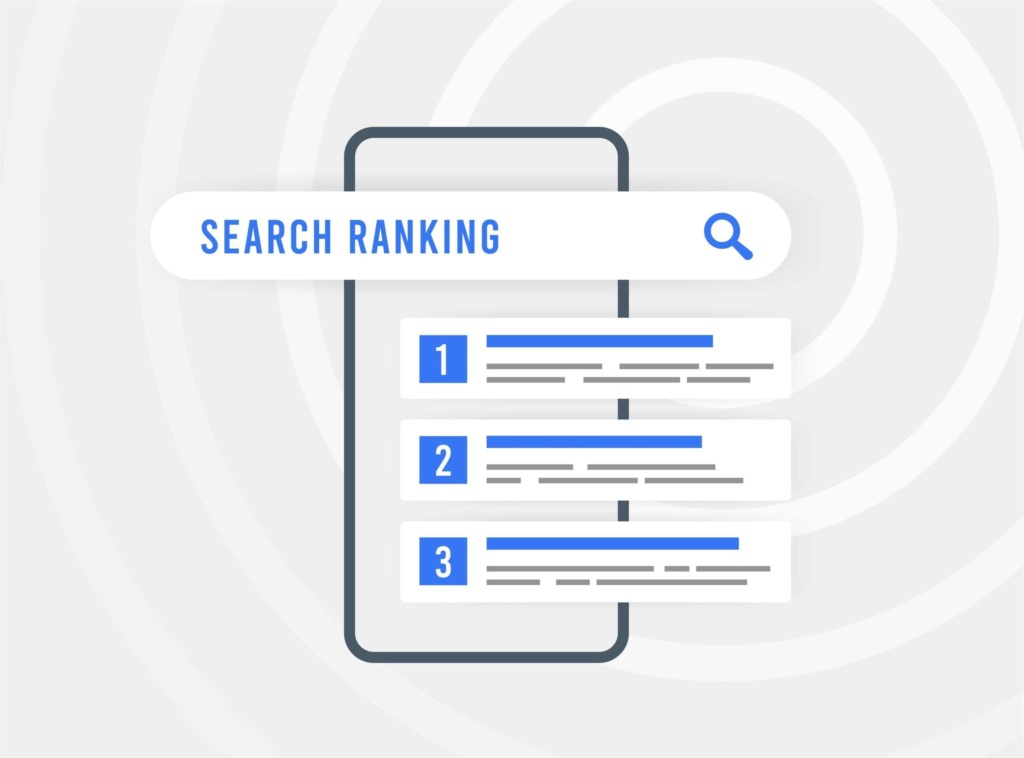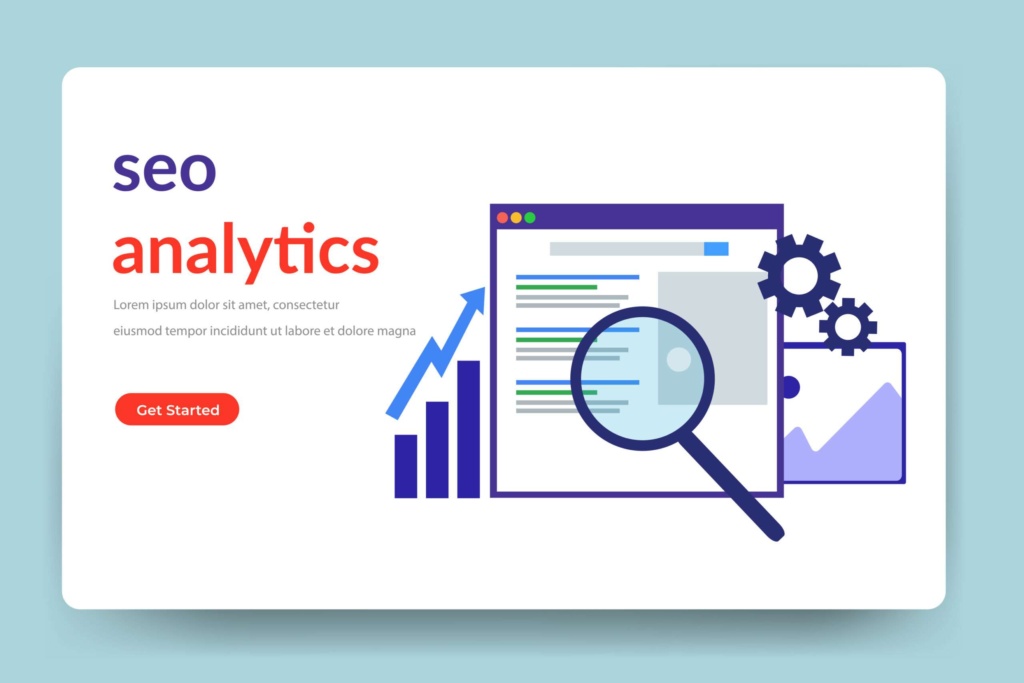We think of it as the Holy Grail of online marketing: appearing on the first page of Google search results. Why is that such a big deal? Because when someone is searching for a healthcare service—local mental health counseling, or help with an achy knee, or assistance for seniors—they are in a moment of need.
And the quicker they spot a resource, the more likely it is they’ll click that link and make a connection, perhaps even become a client or patient.
There’s plenty of advice out there for getting your brand to rank high in search results. (Just type “first page Google search” into the search bar and you’ll see what we mean.)
As we’ve worked with large and small organizations in the healthcare field, we’ve come up with some key tactics that are specific to our clients.

Two Components of Google Search Results
It’s easier to play the Google search game when you work in a large organization, because you have internal resources and external partnerships to throw at it. But search engine strategy is applicable to small nonprofits, individual therapists, and medical practices too. And some of the points we want to share are just good website management practices that you should be doing anyway.
A couple of things to understand first:
Google’s business model depends on delivering the right information at the right time to the right people. So it is in Google’s best interest to make sure search results are accurate and high quality, and to make sure that advertisers aren’t gaming the system. Even for paid search engine marketing, Google factors the quality of the content on the linked page in producing results.
Search ranking follows a formula:
cost per click bid x quality score (relevance, usefulness of content on the landing page)
Theoretically, you could have awesome content and pay less per click and still rank the same or higher. So if you don’t have dollars for paid search campaigns, you can improve your position in organic search results by having excellent, relevant, updated content on your site. And if you do pay for SEM, your dollars are better spent if you have high quality content that meets the searcher’s needs.
6 Strategies for increasing google ranking
Search engine marketing (SEM)
SEM is used to display a sponsored message for your organization on the first page of Google search results. Placement is based on keywords that people would typically use to search for the services or care you provide. (You can also omit negative keywords you’d want to avoid.) You can set a monthly budget and pay Google a small fee for each click on your ad. This approach, also known as pay-per-click (PPC) advertising, can deliver quicker results because your targets are already searching for what your ad offers and, thus, motivated to act.
SEM is the cheapest and most effective way to boost your Google rankings. You can set a budget per keyword to control your spending. And you can schedule PPC advertising to target periods of high demand or to exclude days when your practice is closed.

Search engine optimization (SEO)
SEO encompasses a range of strategies and techniques aimed at enhancing a website’s placement in the organic section of search results (which typically appear below the sponsored listings). Achieving favorable results through SEO takes time and attention, but it’s otherwise a zero-cost way to improve your brand’s search ranking.
Take a look at the content management system (CMS) behind your website and you’ll see all kinds of data and content fields—alt text, meta data, SEO title, headline and subhead tags, image descriptor, excerpt—that feed crucial information to Google to help it understand the content of each page. It’s easy for marketing teams to skip all those fields in the CMS when they’re posting content, not realizing how important it is for generating results. But it’s absolutely worth the investment of time to go back to highly trafficked pages and blog posts to make sure they have the right meta data to help Google understand the visual and text content.
Mobile responsiveness and security
Make sure your site uses HTTPS protocol, which adds a layer of encryption and bolsters security. Your site should perform seamlessly across browsers and platforms; always test the user experience on different devices, especially when you’re adding landing pages tied to your SEM campaigns. It should also be compliant with the Americans With Disabilities Act so it’s accessible for users with different physical, visual, and verbal abilities. If your site is difficult for people to use, then traffic will slow and that will affect how Google ranks it in search.
Content optimization
Prioritize fresh and relevant content in key areas such as the home page, patient education, pictures and videos, and blog entries to improve your search engine ranking. This is the user-facing side of SEO: using keywords within content (especially headers and subheads) that match what people might use to search for your services.
Your marketing team should maintain a list of keywords based on how your audience thinks or talks about what you offer. Put yourself in the prospect’s shoes and figure out the language they’d use—for example, someone is more likely to search the words “knee pain” than “ACL repair.” Google offers a Keyword Planner to help you identify the right words and phrases. And look at your own site traffic to see how people get to you.
Backlinks
Google also weights rankings based on how connected your site is with others, because it recognizes that the more externally connected a website is, the more respected and credible the site is as a resource.
The easiest way to generate backlinks is to register your organization and site with all the pertinent directories for your services. The harder part is getting other organizations or sources to link to you. Scout out other providers, community groups, and regional media and begin to build partnerships with them. For example, you could provide them access to your content in exchange for links, offer subject matter experts for interviews, or provide guest content. What does that look like? Your lead cardiologist might go on local TV during Heart Health Month for an interview, which would be shared on the channel’s website and linked to yours. An orthopedic doc might write blog posts for a community fitness center. Your marketing team would likely generate that on their behalf.
Landing pages
If your site ranks highly on Google, and yet people can’t find the information they need when they click the link to your site, something’s wrong. You could have them go to the homepage, but they’re not likely to get the information they are seeking. It’s better to send them to keyword-specific landing pages that are focused exclusively on that topic so they can get the information quickly and easily take the action you want them to take.
It’s also easy to monitor: You can see how much time they spend on the page and where they go afterward, which helps you understand how they flow through your site, whether they leave too quickly (because the content isn’t relevant or the action is too confusing).
We help all kinds of healthcare organizations build effective, patient-focused websites that use all of these strategies. Ready for a site upgrade? Let’s talk.
Tenth Crow Creative is a brand marketing agency that creates, aligns, and promotes messaging for health and wellness organizations. Through insightful branding, engaging design and compelling marketing campaigns, we help these essential organizations find their identities and effectively communicate with their stakeholders so they can fulfill their missions.

